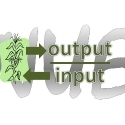02 May 2014
Crop Nutrient Balance - Prairie Provinces - Potassium
Alberta, Saskatchewan, and Manitoba
Western Canadian crop potassium (K) removals generally have been increasing over the past 40 years, particularly in 2013 (Figure 1). Inputs of K in the form of fertilizer have varied over time. A large fraction of the K excreted as manure is considered non-recoverable, owing mainly to its deposition in pastures and loafing areas. The recoverable fraction however is applied to cropland and comprises a substantial proportion of total K inputs. The fate of the non-recoverable manure fraction is mostly on pastures, which are not included in the crop removal figures. Potassium (K), like phosphorus, is relatively immobile in the soil. Many soils of the Canadian prairies have large native supplies of K. Thus amounts of K applied as fertilizers have traditionally been considerably smaller than the amounts removed by crops. Crop removal of K from Western Canadian cropland involves diverse crops (Figure 2). The proportion removed by canola has increased over time. The fraction of manure from hogs and poultry is increasing over time. Since hog and poultry manures are more recoverable, the two sources account for an even greater fraction of recoverable manure (Figure 3).
Note: amounts of potassium are expressed as K2O - to convert a figure expressed as K2O to K, multiply by 0.83.
Figure 1. Potassium inputs include recoverable manure and fertilizer, shown as stacked areas summing to the total input. Removal by harvested crops is shown by the vertical bars. The units are kilograms of K2O per hectare of total cropland. Non-recoverable manure is mainly left on pasture, and is not part of the cropland nutrient balance.
Figure 2. Potassium removed by harvest of major crops. Stacked areas sum to removal by the listed crops.
Figure 3. Potassium in manure, as-excreted and recoverable, from cattle, hogs and poultry.



